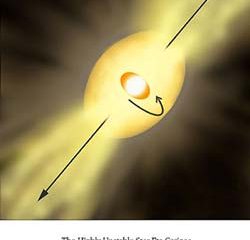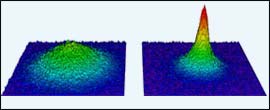This area deals with the fundamental laws and building blocks of nature and how they interact, the properties and the behavior of matter, and research into space and time and their structures.
innovations-report provides in-depth reports and articles on subjects such as astrophysics, laser technologies, nuclear, quantum, particle and solid-state physics, nanotechnologies, planetary research and findings (Mars, Venus) and developments related to the Hubble Telescope.

Astronomers at the Particle Physics and Astronomy Research Councils UK Astronomy Technology Centre (ATC) at the Royal Observatory, Edinburgh have produced compelling new evidence that Vega, one of the brightest stars in the sky, has a planetary system around it which is more like our own Solar System than any other so far discovered.
All of the hundred or so planets that have been discovered around other stars have been very large gaseous (Jupiter-like) planets orbiting close to their star.

VLT Interferometer Gives Insight Into the Shape of Eta Carinae
Ever since 1841, when the until then inconspicuous southern star Eta Carinae underwent a spectacular outburst, astronomers have wondered what exactly is going on in this unstable giant star. However, due to its considerable distance – 7,500 light-years – details of the star itself were beyond observation.
This star is known to be surrounded by the Homunculus Nebula, two mushroom-shaped clouds ejected by the star,

‘Black holes’ are truly black. When an object gets within a certain distance from a black hole, it will get swallowed forever with no chance to escape. That includes light, which means that black holes do not shine.
How do astronomers detect black holes if they are unable to see them? Well, to be precise, astronomers do not detect black holes. But they do detect the phenomena that can only be explained by the existence nearby of objects that match the description of black holes!
Th

Researchers from the Physics Department at the Universitat Autònoma de Barcelona (UAB), the Institut de Ciènca de Materials de Barcelona (ICMAB-CSIC), and the Universidad de Zaragoza have created a new ultra-light transparent magnetic material. Thanks to its properties, the new material could have interesting technological applications, such as creating new types of flat screens and magneto-optical memory devices for computers.
The researchers have obtained the new ultra-light magnets by com

ESA’s Mars Express probe is scheduled to arrive at Mars at Christmas : the Beagle 2 lander is expected to touch down on the surface of the Red Planet during the night of 24 to 25 December.
Launched on 2 June 2003 from Baikonur (Kazakhstan) on board a Russian Soyuz operated by Starsem, the European probe – built for ESA by a European team of industrial companies led by Astrium – carries seven scientific instruments that will perform a series of remote sensing experiments designed to shed

A super-cold collection of molecules behaving in perfect unison has been created for the first time from a sea of “fermion” atoms by researchers at JILA, a joint institute of the Department of Commerce’s National Institute of Standards and Technology (NIST) and the University of Colorado at Boulder (CU-Boulder).
Fermions are a class of particles that are inherently difficult to coax into a uniform quantum state. The ability to meld fermions into this state—a soup of particles that ac